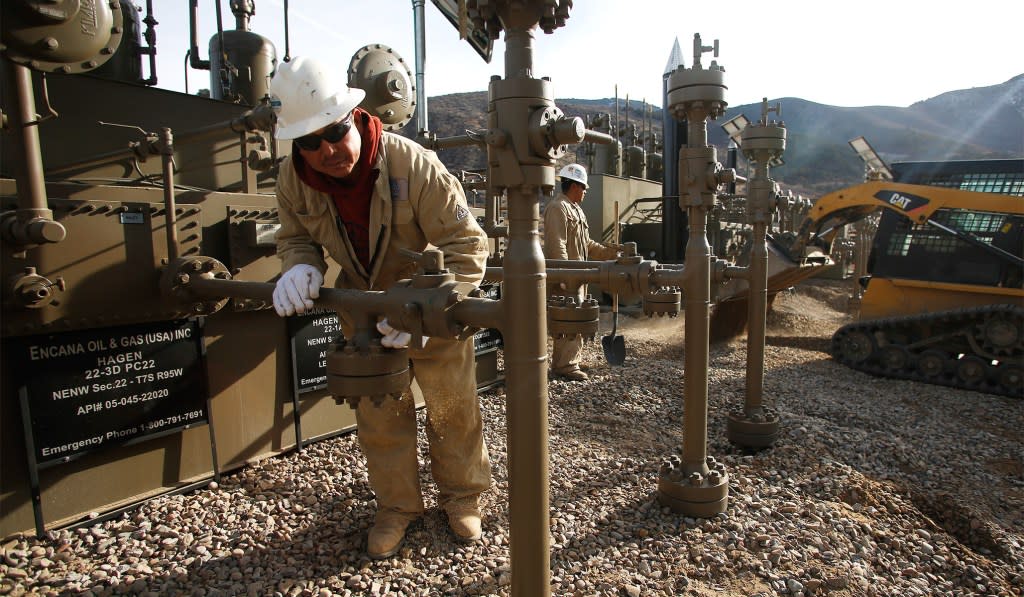The Trump-Administration Reforms Obama’s Misguided Methane-Emissions Rule

Let the hysteria begin. The Trump administration has finalized a reform of the federal rules on emissions of methane, the major component of natural gas, from oil and gas production. The existing rules were implemented by the Obama administration in 2016, justified largely as a means of addressing anthropogenic climate change. That justification is deeply dubious, but any relaxation of such regulations is unacceptable to an environmental Left ideologically opposed to fossil fuels. And so an inexorable avalanche of criticism and litigation from the usual suspects is upon us, all of which will ignore several central truths.
First: Neither the Obama rule nor the proposed reform would have any detectable effect on temperatures or climate phenomena over the remainder of this century. (Climate projections beyond 2100 are not to be taken seriously.) Total U.S. methane emissions in 2018 (635 million metric tons in CO2 equivalents) were 9.5 percent of all U.S. greenhouse-gas emissions, and about 1.2 percent of global greenhouse-gas emissions. Suppose that U.S. methane emissions were to be eliminated completely. If we apply the EPA climate model, which is based on assumptions that exaggerate the effects of reduced emissions, global temperatures would be about 0.012° Celsius lower than otherwise would be the case by the year 2100. If we apply assumptions more consistent with the modern peer-reviewed literature, that predicted effect becomes even smaller — about 0.005° Celsius. If a complete elimination of methane emissions would have a such a trivial effect, the effect of the Obama rule would be even less significant.
The rule’s effect on sea levels and other climate parameters similarly would be undetectable. As temperatures rise, driven by some combination of natural and anthropogenic causes, most climate models predict ancillary effects on sea levels, cyclones, and other phenomena; the commonly asserted seriousness of those effects (“existential threat!”) is not supported by the evidence. The Obama administration claimed that the rule would reduce annual methane emissions by 11 million metric tons, or about 1.7 percent of annual U.S. methane emissions, by 2025 — again, a number too small to have an effect on climate phenomena. In short, the rule cannot satisfy any plausible cost/benefit analysis; the justification used by its backers — that it would be an effective way of addressing anthropogenic climate change — is inconsistent with basic climate science.
Second: The Obama rule and the Trump reform apply only to U.S. oil and gas production and transport systems, which account for about 28 percent of U.S. methane emissions and about 2.6 percent of U.S. greenhouse-gas emissions. They do not apply to U.S. agriculture, which account for 40 percent of U.S. methane emissions and 3.8 percent of U.S. greenhouse-gas emissions.
Agricultural methane emissions stem from enteric fermentation by livestock, manure management, rice production, composting, field burning of field residues, and other processes. The Trump reform recognizes the obvious: Even apart from the near-zero effect on the climate of methane emissions whatever their source, agricultural emissions are larger than those from fossil-fuel operations. But it would be much more difficult to reduce agricultural emissions; doing so would drive up the industry’s costs significantly, and thus the prices that Americans pay for food. The costs to fossil-fuel operations of the Obama methane rule by contrast are hidden in a long supply chain comprising exploration, production, gathering and transport (including transport of crude oil and refined products from overseas), refining, distribution, imports, and so on, while the adverse price effects can be blamed on the evil oil companies.
All this helps to explain the refusal of one Congress after another to target methane emissions — or greenhouse-gas emissions more generally — through legislation. Political support for such policies is nonexistent outside the environmental Left, which is why the Obama administration resorted to executive-branch regulation to enact them.
Third: The Obama rule largely overlapped with the existing regulation of volatile organic compounds (VOCs) emitted as a result of fossil-fuel companies’ operations. VOCs contribute to the formation of ground-level ozone, a problem very different from the climate-change rationale used to justify the methane rule. Regulations directed at the reduction of VOC emissions have the natural ancillary effect of reducing methane emissions as well, a reality recognized by the Obama administration itself. For the reasons already discussed, these ancillary effects are so small as to be irrelevant in terms of climate phenomena, and the Trump administration is not proposing a relaxation of the regulations reducing VOC emissions in any event.
Note that only about a quarter of U.S. VOC emissions result from industrial and other economic activities; about 70 percent are from biological (“biogenic”) sources. Most of the emissions from economic activities result from “other industrial processes,” defined by the EPA as “chemical production, petroleum refining, metals production, and processes other than fuel combustion.” Between 1990 and 2014, the most recent period for which the EPA has reported data, non-biological VOC emissions have declined 47 percent, and VOC emissions from “other industrial processes” have declined about 26 percent. This is largely consistent with the 18 percent decline in U.S. methane emissions from 1990 to 2018. The correlation means that the Obama methane rule was redundant, imposing costs on fossil-fuel production without providing any benefits.
Why is it that methane emissions from fossil-fuel operations have declined about 23 percent since 1990, despite an increase in oil production of 49 percent, and an increase in gas production of 72 percent? Notwithstanding the assertions of the environmental Left, a reduction in methane emissions furthers the industry’s interests, because methane is valuable; from the viewpoint of a profit-seeking fossil-fuel producer, sales are vastly preferable to losses through emissions. The interests of the private sector and environmental protection are far more consistent than commonly asserted, a reality that no one should be allowed to obscure.

